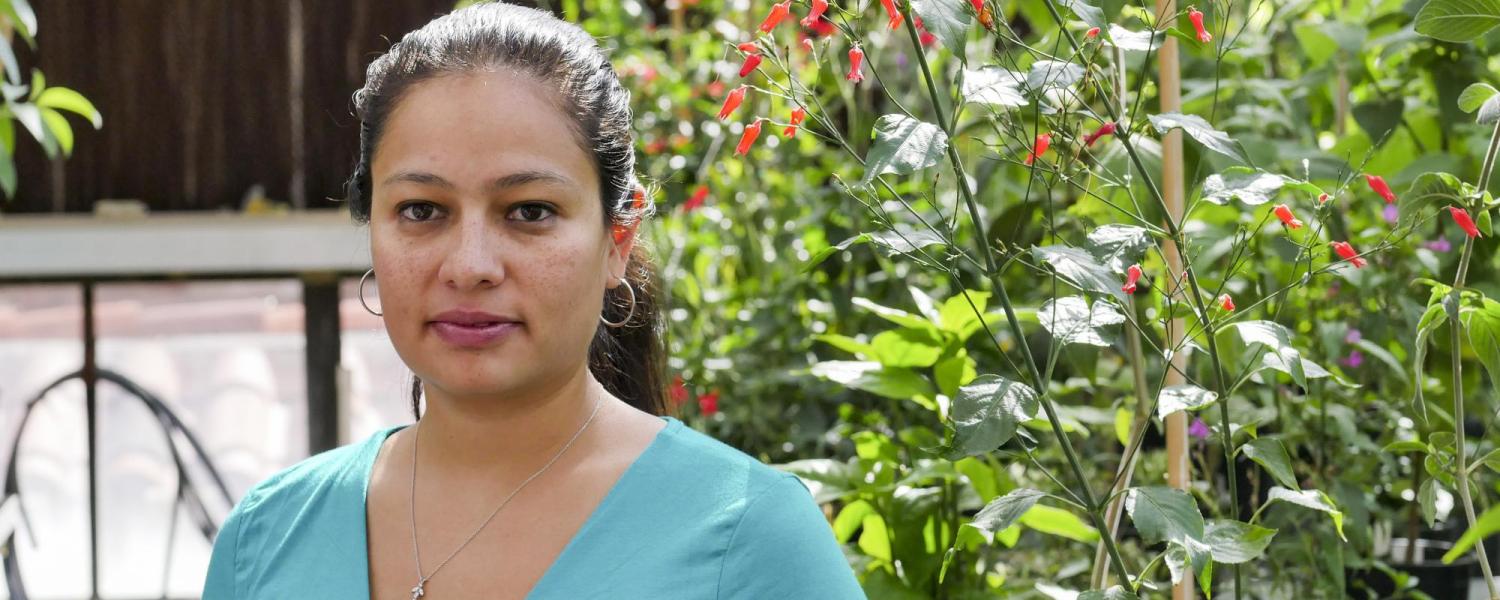
Tomatoes. Sunflowers. Influenza. Humans. Over the past three decades, DNA sequencing has allowed scientists to compile robust genetic profiles of organisms large and small, but Cannabis has remained a high-profile exception.
Eight states have legalized recreational use of the controversial plant over the past five years (including Colorado in 2012), but Cannabis remains illegal federally, presenting challenges for researchers hoping to learn more about its genome, its biology and its impact on public health.
Enter Daniela Vergara. The fourth-year postdoctoral researcher in CU Boulder’s Department of Ecology and Evolutionary Biology (EBIO) has been studying the genetic diversity of multiple Cannabis varieties in an attempt to shed light on largely unexplored questions, such as the genetic variables that control tetrahydrocannabinol (THC) production and the biological mechanisms that give the plant its psychoactive effects.
“Cannabis is fascinating because it has lots of genetic differences, which is why you can do so many things with it,” said Vergara. “It’s used for hemp fiber, paper, oil; the seeds are edible . . . There are literally hundreds of compounds that can be extracted from it. But without further study, we still don’t really know why it interacts with our body the way it does.”
Who: Open to the public; seating is limited
What: “Diversity in Cannabis sativa” lecture
When: Tuesday, Oct. 17, 7 p.m.
Where: CU Museum of Natural History, Paleontology Hall
Daniela Vergara will share the results of her studies on the genetic diversity of multiple Cannabis varieties, including the variation we see in the whole genome, in the chemicals produced by the Cannabis plant and in the genes related to cannabinoid production.
Raised in Cali, Colombia, Vergara grew up amidst a family of academics. She recalls spending many of her early days at the university where her father, a physicist, still teaches. From an early age, she knew she wanted to pursue an advanced degree and began a biology track initially focused on parasitology and disease vectors.
In 2007, Vergara came to the United States and earned her PhD at Indiana University, where she explored host-parasite co-evolution and researched one of the biggest questions in evolutionary biology: Why do organisms bother with male/female sexual reproduction at all instead of having female members clone themselves in perpetuity?
“One of the possible answers is that males provide variation that guards against a disease coming along and wiping out an entire population,” said Vergara. “The genetic diversity acts as protection for the species as a whole.”
Still, Vergara had a difficult time acquiring grants to continue in her field. She and her husband moved to Colorado in 2013 and, after joining Assistant Professor Nolan Kane’s lab at CU Boulder, she finally had a lightbulb moment: Why not apply her evolutionary biology knowledge to Cannabis, which had recently been legalized in the state?
“I was surprised at how little genomic research had been done up to that point on Cannabis, considering it’s a topic that inspires so much popular interest,” said Vergara.
Want more stories like this in your inbox? Sign up for the CU Boulder Today community edition.
Kane, who had done DNA sequencing on other domestic plants in the past, liked the idea, and Vergara quickly set about designing experiments.
Studying Cannabis, however, is fraught with legal hurdles. With the plant still classified as a Schedule I illegal substance at a federal level, obtaining samples on campus was a non-starter. CU Boulder policies prohibit the use, possession and distribution of marijuana and other drugs on its smoke-free campus, and, per federal guidelines, CU Boulder researchers may not handle, store, consume, purchase or provide Cannabis for research purposes. Furthermore, all federally-approved Cannabis research requires extensive credentialing from the National Institute on Drug Abuse (NIDA).
Not to be deterred, Vergara reasoned she could still acquire third-party DNA data from Cannabis growers, which could then be sequenced and analyzed without breaking any laws. In 2016, with data from an independent testing laboratory, she published a paper showing that NIDA-provided Cannabis strains average between 5 and 6 percent THC content, while those strains sold in legal recreational markets such as Seattle averaged closer to 20 percent—a major difference that makes it difficult to gauge the real health effects of marijuana that’s widely available.
“If you’re studying wine or tobacco, for example, you study the stuff people actually use,” said Vergara, who hopes restrictions around Cannabis research will eventually ease in order to allow scientists from all disciplines to examine the plant more thoroughly.
Vergara plans to continue using third-party data to explore biological mysteries about Cannabis, such as why the plant has male, female and hermaphrodite members that can all cross-pollinate successfully with one other—a relative rarity among plant families. She founded and directs the Agricultural Genomics Foundation, a non-profit organization which aims to make Cannabis science accessible to the general public.
Ultimately, Vergara would like to help build out an open-access genetic compendium of Cannabis strains, similar to what already exists for other plant species.
“A genetic map is also crucial to understand the location of genes of interest, and this tool is available for multiple other crops,” she said.
Vergara will present an overview of her research during a free public lecture at 7 p.m. Tuesday, Oct. 17, at the CU Museum of Natural History. The museum is currently featuring Cannabis: A Visual Perspective, a first-of-its-kind art installation of botanical illustrations of Cannabis presented in association with the Rocky Mountain Society of Botanical Artists.



